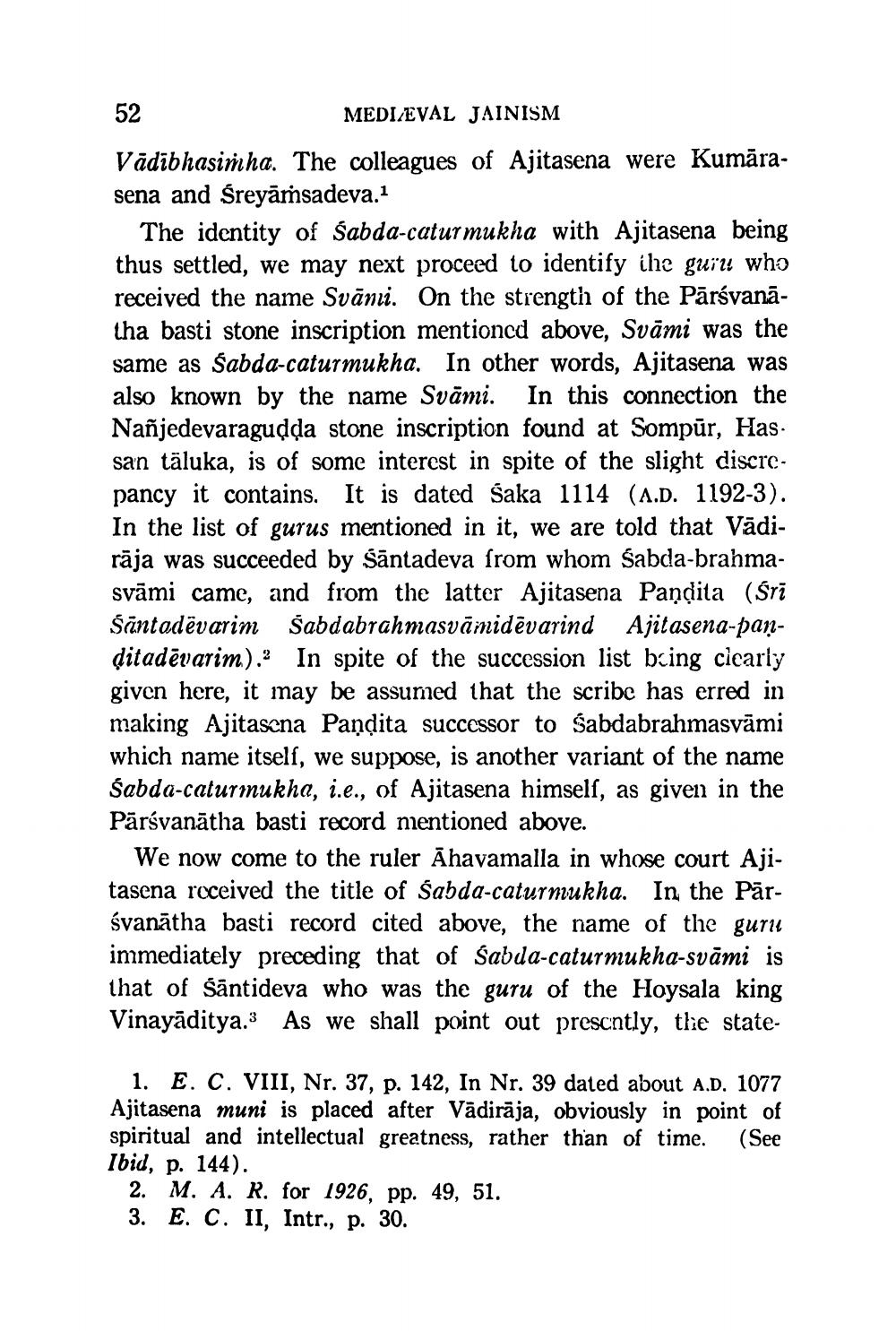________________
MEDIEVAL JAINISM
Vādībhasimha. The colleagues of Ajitasena were Kumārasena and śreyāṁsadeva.1
The identity of Sabda-caturmukha with Ajitasena being thus settled, we may next proceed to identify the guru who received the name Svāni. On the strength of the Pārsvanātha basti stone inscription mentioned above, Svāmi was the same as Sabda-caturmukha. In other words, Ajitasena was also known by the name Svāmi. In this connection the Nañjedevaragudda stone inscription found at Sompūr, Has. san täluka, is of some interest in spite of the slight discrepancy it contains. It is dated Saka 1114 (A.D. 1192-3). In the list of gurus mentioned in it, we are told that Vādirāja was succeeded by Sāntadeya from whom Sabda-brahmasvāmi came, and from the latter Ajitasena Pandita (śrī Śäntadēvarim Sabdabrahmasvāiidēvarind Ajitasena-panditadēvarim). In spite of the succession list being cicarly given here, it may be assumed that the scribe has erred in making Ajitasena Pandita successor to Sabdabrahmasvāmi which name itself, we suppose, is another variant of the name Sabda-caturmukha, i.e., of Ajitasena himself, as given in the Pārsvanātha basti record mentioned above.
We now come to the ruler Ahavamalla in whose court Ajitasena roceived the title of Sabda-caturnukha. In the Pārśvanātha basti record cited above, the name of the guru immediately preceding that of Sabda-caturmukha-svāmi is that of śāntideva who was the guru of the Hoysala king Vinayāditya.3 As we shall point out prescntly, the state
1. E. C. VIII, Nr. 37, p. 142, In Nr. 39 dated about A.D. 1077 Ajitasena muni is placed after Vādirāja, obviously in point of spiritual and intellectual greatness, rather than of time. (See Ibid, p. 144).
2. M. A. R. for 1926, pp. 49, 51. 3. E. C. II, Intr., p. 30.




